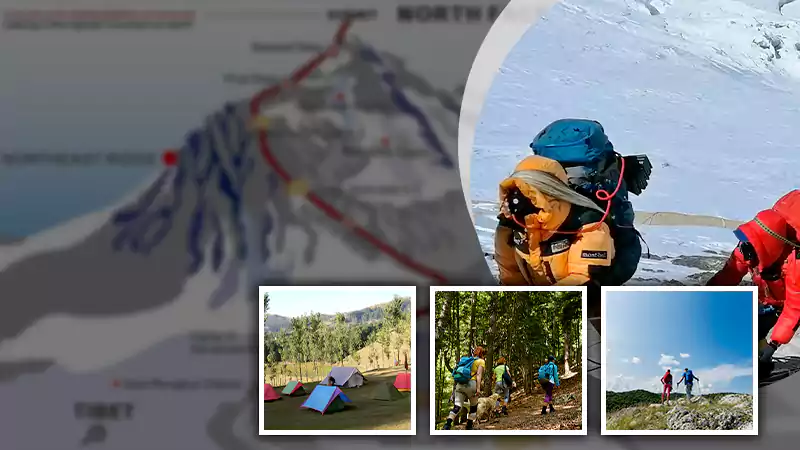
Base camp is an integral part of the experience for hikers embarking on a journey. It provides a safe and secure place to rest, recuperate, plan for other journeys, and even enjoy the company of fellow adventurers. Base camps are integral for hiking trips, as they provide vital support through supplies, equipment, and experienced guides and porters. Hikers should be familiar with the basics of base camps and what to expect when setting up camp to ensure the trip is successful and enjoyable.
What Hikers Need to Know About Base Camps
There are several things hikers must consider when planning a hike that includes a base camp. It will help them make the most of their time and energy on the trails and ensure they are adequately equipped and prepared for their journey. If unprepared, hikers may find themselves with insufficient resources and knowledge, which could result in an uncomfortable experience.
Everest Base Camp Trip Preparations
Preparing for an Everest base camp trip requires careful planning. Before embarking on such a journey, hikers should familiarise themselves with the type of terrain they will encounter during the climb. It includes researching different trails that lead to Everest base camp and training for high-altitude conditions. Additionally, familiarising oneself with local weather patterns can help ensure a safe and enjoyable experience. Other important preparations include familiarising oneself with the necessary equipment and ensuring it is in good condition before the trip.
Planning a Base Camp Location
When planning a base camp, hikers should consider terrain, access to water sources, shelter, and medical facilities. The goal should be to find a safe and comfortable area for prolonged stays while providing easy access to trails and nearby attractions. Additionally, choosing a campsite close to local villages can provide valuable resources such as food and supplies. It’s important to remember that higher altitudes present more challenges than those at lower elevations, so additional precautions may need to be taken when choosing a suitable base camp location.
What to Pack for a Base Camp
When packing for a base camp, hikers should include the essential items to support their journey. These include clothing suitable for changing weather conditions, food and water supplies, medical supplies, camping equipment such as tents and sleeping bags, tools for repairs and maintenance, and navigation equipment. Additionally, it’s important to pack items that provide comfort, such as chairs or other furniture, for relaxing after long days on the trail.
Storing Supplies at Base Camps
For those planning extended stays at a single base camp location, it’s important to consider storing extra supplies in emergencies. Storing food items in airtight containers can help prevent spoilage due to moisture or pests. Stowing them in waterproof bags is also essential to protect electronics from the elements. Additionally, it’s important to keep a first-aid kit on hand for any injuries that may occur during the journey.
Safety Considerations at Base Camps
When spending time at a base camp, it’s essential to consider safety measures. It includes informing family and friends of the specific location and duration of the trip, as well as creating an emergency plan in case of injury or illness. It’s also important to stay aware of local weather forecasts and adjust plans accordingly. Additionally, hikers should never venture onto trails without adequate protection from wild animals and other potential hazards.
What Happens at a Base Camp?
A base camp provides several services to help hikers make the most of their journey. It includes access to food, water, shelter, and medical facilities. Additionally, it offers a safe environment for resting and relaxing between hikes. There may also be local guides or experts available to provide information about the surrounding area and advice on the best routes and attractions to explore.
When do Hikers Return to Base Camp?
Hikers typically return to base camp at the end of each day or when they reach their final destination. It allows them to rest and recuperate after long days on the trail, review maps, and plan their next journey. Additionally, it provides a chance to repair any equipment that may have been damaged during the trek. Furthermore, returning to base camp can help hikers stay safe by providing access to medical services in case of injury or illness.
What are the Advantages of Staying in a Base Camp?
Staying in a base camp offers many advantages. It includes access to basic food, water, and medical facilities to help keep hikers safe and comfortable during their journey. Additionally, it provides an opportunity to rest and relax between hikes, review maps, and plan their next day’s journey. Moreover, base camps can provide access to local guides and experts who can advise on the best routes and attractions to explore.
What Rules Should Hikers Follow When at a Base Camp?
When staying in a base camp, it’s crucial to adhere to any local regulations or customs that may be in place. Additionally, hikers should always respect the environment and stay aware of their impacts on wildlife and ecosystems. Furthermore, they should endeavor to leave the area better than they found so future generations can enjoy it.












